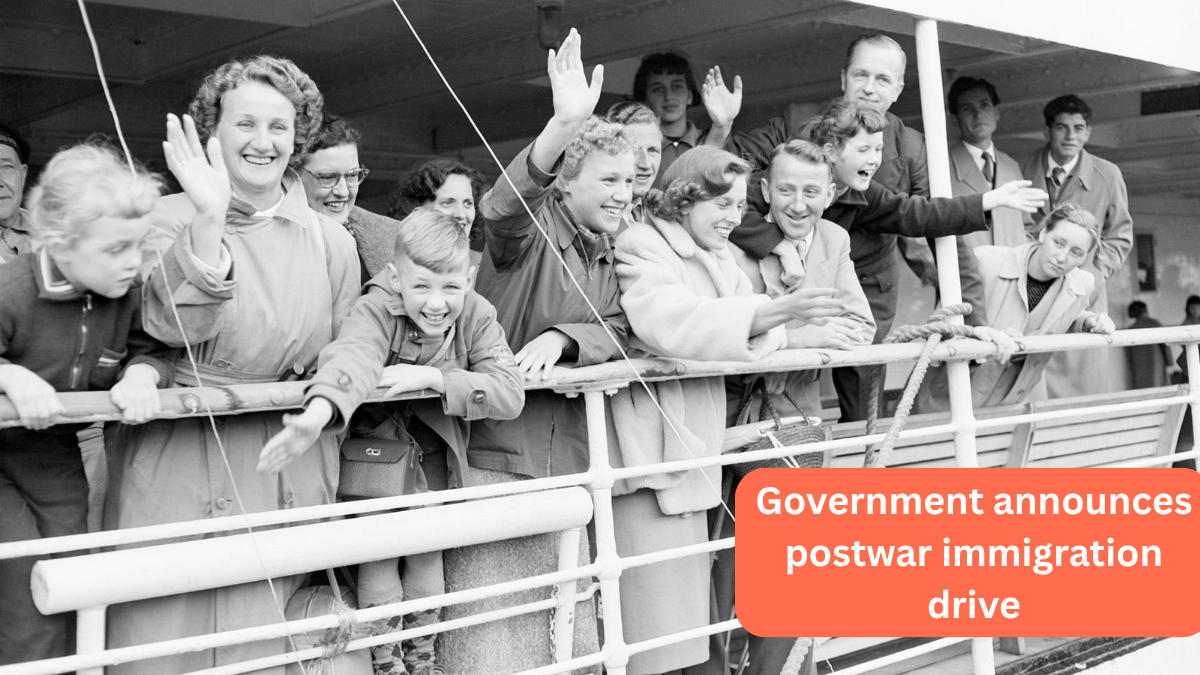Between 1945 and 1965, more immigration than two million immigrants came to Australia — an incredible population shift that changed the face of the nation forever.
This wasn’t just coincidence. It was a conscious decision by the Australian Government, based on a bold and urgent idea: “populate or perish.”
The War That Changed Everything
When Japan entered World War II in 1941, the threat to Australia became terrifyingly real. Darwin was bombed. Singapore fell. The once-distant idea of invasion was suddenly close.
Australia realized it was vulnerable — too big a continent for too small a population to defend.
As early as 1944, Prime Minister John Curtin told his Cabinet that, once the war ended, Australia would need a Ministry for Immigration. The goal? Grow the population quickly and develop the country to ensure its survival.
Arthur Calwell: Australia’s First Immigration Minister
In July 1945, Arthur Calwell was appointed Australia’s first-ever Minister for Immigration. Just weeks later, he made a bold speech to Parliament:
For the first time, Australia openly declared it was ready to welcome non-British migrants, although still within the limits of the White Australia Policy. This was a massive shift in policy and mindset.
The Thinking Behind the Policy
A key influence on this new direction was economist WD ‘Bill’ Forsyth. In his book The Myth of Open Spaces (1942), Forsyth argued that post-war immigration shouldn’t be tied to farming, as it was after WWI. Instead, Australia should focus on building cities and industries — and attract workers from Southern and Eastern Europe where displaced populations were growing.
These ideas shaped Calwell’s policies. The government aimed to increase Australia’s population by 1% each year through immigration alone.
“Ten Pound Poms” and the Beautiful Balts
Even before WWII officially ended, Australia struck deals with Britain to bring in immigrants under the Assisted Passage Scheme — better known as the “Ten Pound Pom” program. For just £10, British citizens could move to Australia. Despite Britain’s push to keep its own people home to rebuild, over 400,000 Britons registered by 1947.
But Calwell knew Australia needed more than just British migration.
In 1947, the first non-British refugees arrived from Estonia, Latvia, and Lithuania. These young, single people — nicknamed the “Beautiful Balts” by the media — were hand-picked from displaced persons camps in Europe. Their positive public image helped win over a skeptical public.
A Gradual Opening of Doors
Over the next decade, the Australian government gradually widened its immigration policy:
- Migrants from Southern and Eastern Europe were increasingly accepted.
- In 1957, the rules were relaxed for non-European migrants, allowing them to stay longer and eventually apply for citizenship after 15 years (compared to five for Europeans).
- Select groups from the Middle East and Asia were admitted on temporary visas.
From 1946 to 1960, Australia’s population grew by 2.7% per year. One-third of that growth came from immigration, adding over 1.2 million new residents. By 1960, Australia’s population reached 10.3 million.
Changing the Nation — For Good
This mass migration did more than boost numbers. It transformed Australian society, turning it into a far more diverse, multicultural nation — even if that transition took decades and often met with resistance.
New arrivals brought new languages, traditions, foods, music, and industries, enriching every part of Australian life. Many of the public spaces, suburbs, restaurants, and community organizations that define modern Australia have roots in this era.
From White Australia to Multiculturalism
The “populate or perish” campaign marked the beginning of the end for the White Australia Policy — a policy that had strictly limited non-European immigration since Federation.
While the official policy remained in place for some time, real change began here. Over time, more inclusive and multicultural policies took its place, culminating in the abolition of the White Australia Policy in the 1970s.
A Legacy That Lives On
Images of newly arrived migrants, young families stepping off ships, and crowded community festivals tell the story of Australia’s rebirth after the war. The post-war immigration boom wasn’t just a political decision — it was a defining national moment.
